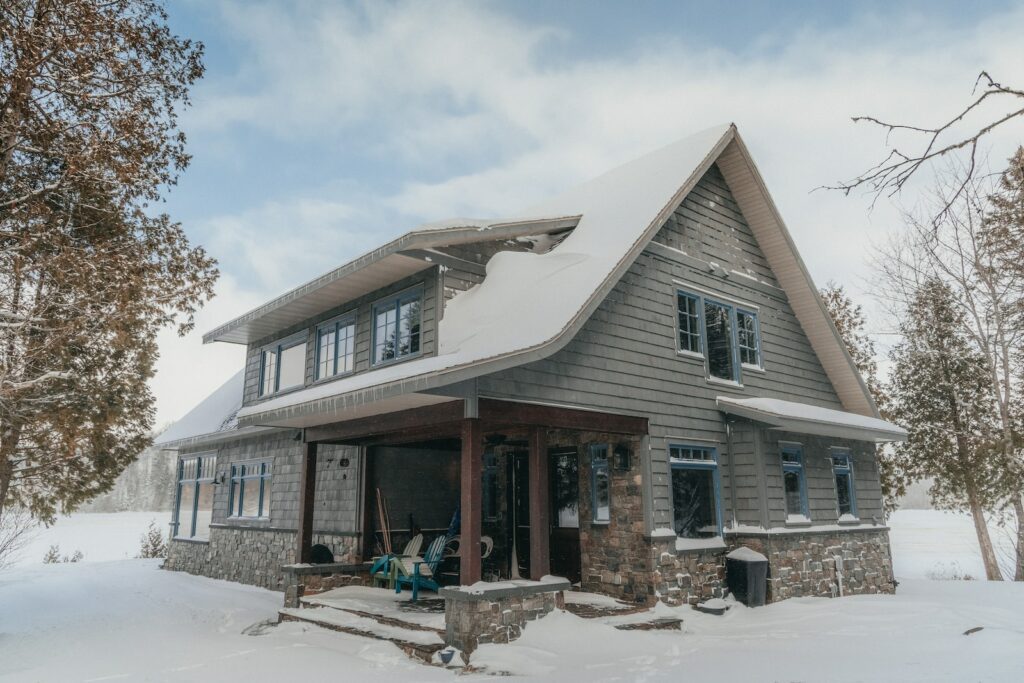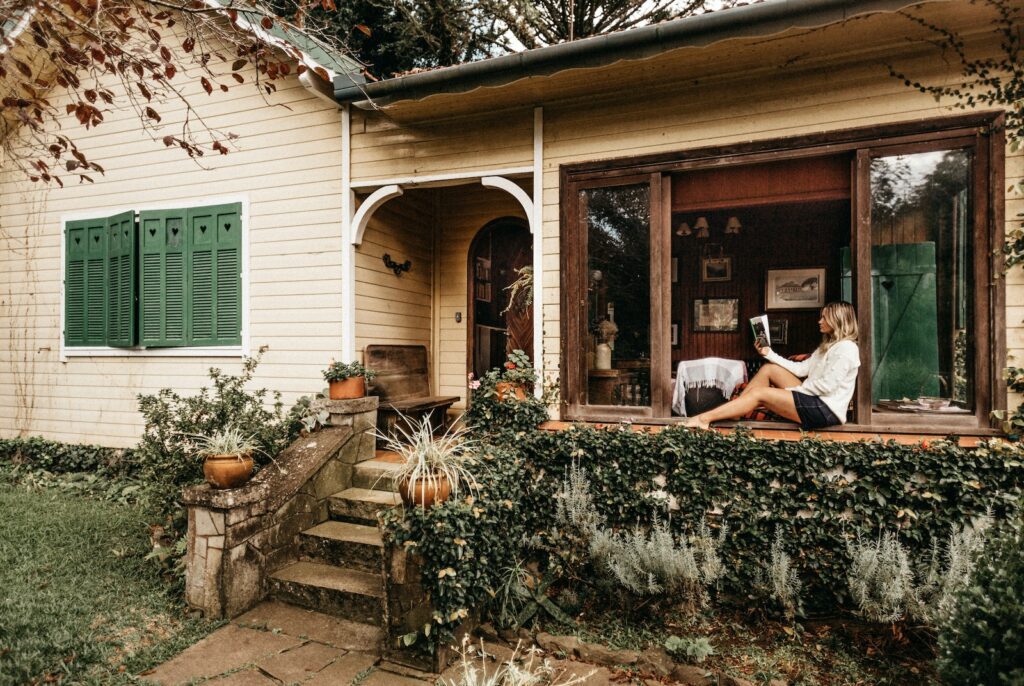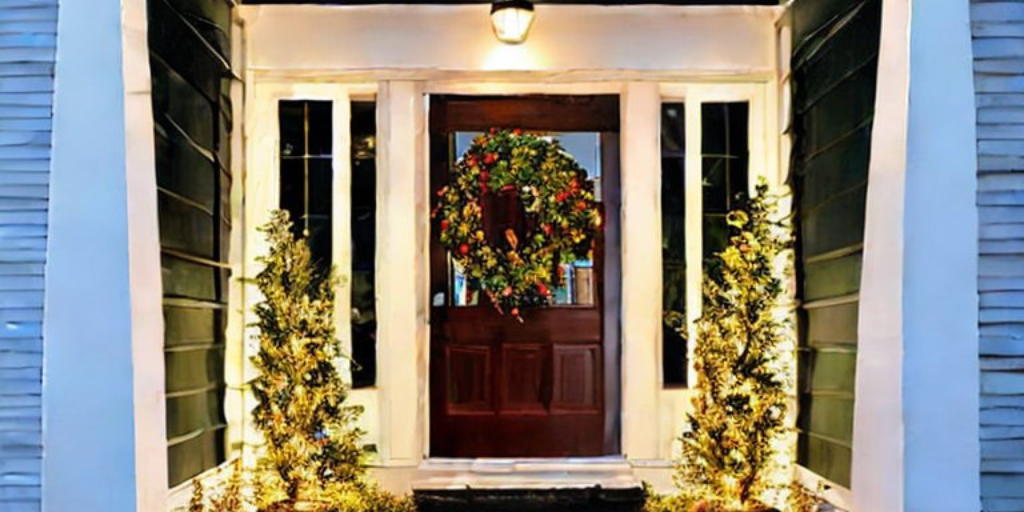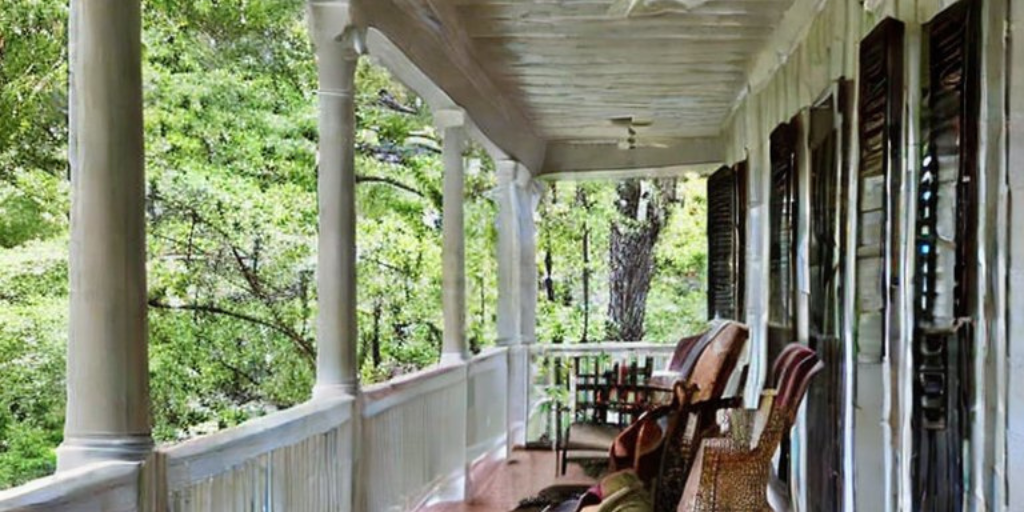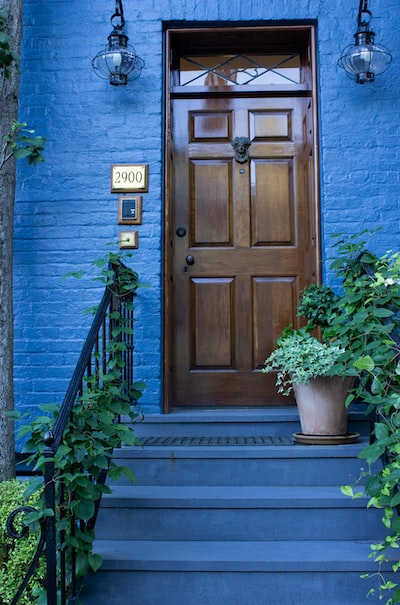Do you want to know how to keep porch posts from rotting? If you follow the steps provided, you will be able to do so. A porch is a valuable addition to any home, providing a space to relax and enjoy the outdoors. However, porch posts are often exposed to moisture, which can cause them to rot over time.
Rotting porch posts not only detract from the aesthetic appeal of a home but can also compromise its structural integrity. In this guide, we will explore some effective ways to keep porch posts from rotting and extend the lifespan of your porch.
How to keep porch posts from rotting?
Contents
- 1 How to keep porch posts from rotting?
- 2 What are the best materials to prevent porch posts from rotting?
- 3 How can I waterproof porch posts to prevent rot?
- 4 What kind of paint or sealant should I use on porch posts to prevent rot?
- 5 How often should I treat porch posts to prevent rot?
- 6 Can I use a wood hardener to prevent porch posts from rotting?
- 7 What are some natural methods to prevent porch posts from rotting?
- 8 What are some common mistakes that cause porch posts to rot?
- 9 Should I use pressure-treated wood for my porch posts to prevent rot?
- 10 Can I wrap my porch posts with aluminum to prevent rot?
- 11 Are there any special considerations for preventing rot in porch posts in humid climates?
- 12 How can I ensure proper drainage around my porch posts to prevent rot?
- 13 What are some preventative measures I can take to keep porch posts from rotting in the first place?
- 14 Final thoughts on how to keep porch posts from rotting
There are several effective ways to keep porch posts from rotting:
Use rot-resistant materials: When building or repairing porch posts, use materials that are naturally resistant to rot, such as pressure-treated lumber, cedar, or redwood.
Regular maintenance: Regularly inspect the porch posts for signs of damage or rot, and promptly address any issues that arise. Keep the porch clean and free of debris that can trap moisture.
Proper drainage: Ensure that the porch has adequate drainage to prevent water from pooling around the posts. Install gutters and downspouts to direct water away from the porch.
Elevate the posts: Elevating the posts slightly off the ground can help prevent moisture from seeping into the wood. Use concrete footings or install metal post brackets to raise the posts.
Apply protective coatings: Applying a protective coating to the porch posts can help prevent moisture from penetrating the wood. Use a high-quality paint or stain that is specifically designed for outdoor use.
By taking these simple steps to prevent porch post rot, homeowners can ensure the longevity of their porch and avoid costly repairs in the future.
What are the best materials to prevent porch posts from rotting?
The best materials to prevent porch posts from rotting are those that are naturally resistant to decay, such as cedar, redwood, and cypress. These types of wood contain natural oils and resins that make them resistant to moisture, fungi, and insects.
Another option is to use pressure-treated wood, which is chemically treated to resist rot, decay, and insects. However, it is important to note that pressure-treated wood can still rot over time if it is not properly maintained.
In addition to using rot-resistant woods, it is also important to properly seal and protect the wood with a high-quality paint or sealant. This can help prevent moisture from penetrating the wood and causing it to rot.
Finally, some homeowners may opt for alternative materials such as metal, vinyl, or composite materials that are designed to mimic the look of wood while offering superior resistance to rot and decay.
How can I waterproof porch posts to prevent rot?
To waterproof porch posts and prevent rot, you can follow these steps:
Remove any existing paint or finish from the porch posts with a paint stripper and sandpaper.
Clean the surface of the porch posts with a mild soap and water solution, and allow them to dry completely.
Apply a wood preservative to the porch posts. A wood preservative will protect the wood from rot and decay caused by moisture. Be sure to use a product that is specifically designed for outdoor use.
Apply a waterproofing sealer to the porch posts. A waterproofing sealer will help to prevent water from penetrating the surface of the wood, which can cause rot and decay. Be sure to use a product that is specifically designed for use on wood.
Apply a coat of exterior paint or stain to the porch posts. This will help to further protect the wood from moisture and prevent rot.
Repeat the process of applying the wood preservative, waterproofing sealer, and exterior paint or stain every few years to maintain the protection and prevent rot.
By following these steps, you can waterproof your porch posts and prevent rot, helping to ensure the longevity of your porch and maintaining its appearance.
What kind of paint or sealant should I use on porch posts to prevent rot?
When selecting a paint or sealant to use on porch posts to prevent rot, it’s important to choose a product that is specifically designed for use on exterior wood and is water-resistant. Here are some options to consider:
Exterior oil-based paint: Oil-based paint is a popular choice for exterior wood surfaces because it creates a hard, durable finish that is water-resistant. Make sure to choose a paint that is specifically formulated for outdoor use.
Exterior latex paint: Latex paint is another option for painting porch posts. It dries faster than oil-based paint, and it’s easy to clean up with soap and water. Look for a paint that is labeled for exterior use and is water-resistant.
Exterior wood stain: A wood stain is a good option if you want to show off the natural wood grain of your porch posts. Choose a stain that is specifically formulated for exterior use, and make sure it provides protection against water.
Waterproofing sealer: A waterproofing sealer is specifically designed to protect wood from water damage. It penetrates the wood to create a barrier against moisture, and it can be used alone or as a topcoat over paint or stain. Look for a sealer that is labeled for use on exterior wood.
Overall, it’s important to choose a high-quality product that is designed for use on exterior wood and provides protection against water and moisture. Make sure to follow the manufacturer’s instructions for application and maintenance to ensure the best results.
How often should I treat porch posts to prevent rot?
The frequency with which you should treat porch posts to prevent rot depends on various factors, including the type of wood, the local climate, and the amount of exposure to moisture. However, as a general guideline, it’s recommended that you treat porch posts every 2-3 years to maintain their protection against rot.
Here are some signs that may indicate that it’s time to treat your porch posts:
The wood is beginning to look dry, faded, or weathered.
The wood feels rough or splintery to the touch.
The paint or stain is peeling or flaking off.
You notice any signs of moisture damage, such as warping, cracking, or discoloration.
You live in an area with high humidity, frequent rainfall, or extreme temperatures, which can accelerate wood decay.
Keep in mind that regular maintenance is essential to prevent rot and extend the life of your porch posts. In addition to treating the wood every few years, you should also regularly clean the surface with a mild soap and water solution to remove dirt, debris, and mold, and inspect the wood for any signs of damage or decay.
By taking these steps, you can help ensure that your porch posts remain in good condition and continue to provide long-lasting support and aesthetic appeal to your porch.
Can I use a wood hardener to prevent porch posts from rotting?
Yes, you can use a wood hardener to prevent porch posts from rotting. A wood hardener is a type of product that is designed to strengthen and fortify damaged or weakened wood, making it more resistant to rot and decay. It works by penetrating deep into the wood fibers, filling in cracks and voids, and creating a solid base that can be painted or stained.
Here’s how to use a wood hardener on porch posts:
Clean the surface of the porch posts with a mild soap and water solution, and allow them to dry completely.
Use a paintbrush to apply the wood hardener to the surface of the porch posts, making sure to cover all areas thoroughly.
Allow the wood hardener to dry for the time recommended by the manufacturer. This can vary depending on the specific product, but it’s usually several hours to overnight.
Sand the surface of the porch posts lightly with fine-grit sandpaper to smooth out any rough spots or raised areas.
Apply a waterproofing sealer or exterior paint to the porch posts to further protect the wood from moisture and prevent rot.
It’s important to note that a wood hardener is not a substitute for regular maintenance and upkeep of your porch posts. While it can help to strengthen and protect the wood, it’s still important to clean and inspect the porch posts regularly and treat them with a wood preservative, waterproofing sealer, or paint/stain as needed to maintain their protection against moisture and prevent rot.
What are some natural methods to prevent porch posts from rotting?
There are several natural methods that you can use to prevent porch posts from rotting. Here are some options:
Use naturally rot-resistant wood: One of the best ways to prevent porch posts from rotting is to use naturally rot-resistant wood, such as cedar, redwood, or cypress. These types of wood contain natural oils and resins that make them more resistant to moisture and decay.
Apply natural wood preservatives: Natural wood preservatives can be used to protect porch posts from rotting. For example, a mixture of equal parts of boiled linseed oil and turpentine can be applied to the wood to provide protection against moisture. Beeswax, which is naturally water-resistant, can also be used to seal and protect the wood.
Use vinegar and baking soda: A mixture of vinegar and baking soda can be used to clean porch posts and prevent rot. Mix equal parts of white vinegar and water in a spray bottle, and spray the solution onto the wood. Then, sprinkle baking soda onto the wood, and scrub with a stiff brush. Rinse the wood thoroughly with water and allow it to dry completely.
Install proper drainage: Proper drainage is important for preventing moisture buildup around porch posts, which can lead to rot. Make sure that the ground around the porch posts is graded away from the house, and install gutters and downspouts to direct rainwater away from the porch area.
Provide ventilation: Adequate ventilation is important for preventing moisture buildup inside porch posts, which can also lead to rot. Make sure that the posts have adequate ventilation to allow air to circulate and dry out any moisture that may be present.
By using these natural methods, you can help to prevent porch posts from rotting and extend their lifespan.
What are some common mistakes that cause porch posts to rot?
There are several common mistakes that can cause porch posts to rot. Here are some of them:
Poor installation: One of the most common mistakes that can cause porch posts to rot is poor installation. If the posts are not installed properly, they may not be level, which can cause water to accumulate around the base of the post, leading to rot.
Lack of proper maintenance: Porch posts need regular maintenance to prevent rot. If they are not regularly cleaned and treated with a protective coating, such as paint or sealant, they can become susceptible to moisture damage.
Incorrect drainage: Proper drainage is critical for preventing moisture buildup around porch posts, which can lead to rot. If the ground around the posts is not properly graded or if there are no gutters or downspouts to direct rainwater away from the porch, this can cause water to accumulate around the posts.
Direct contact with the ground: Porch posts should never be in direct contact with the ground. This can cause moisture to accumulate around the base of the post, leading to rot. Instead, the posts should be elevated on a concrete or masonry pier, or installed on a metal post anchor.
Using the wrong materials: Using the wrong materials for porch posts can also contribute to rot. For example, untreated wood, which is not naturally resistant to moisture and decay, can rot quickly if not treated with a protective coating. Similarly, metal fasteners that are not designed for outdoor use can corrode and weaken over time, leading to structural damage.
By avoiding these common mistakes and taking steps to properly install, maintain, and protect porch posts, you can help to prevent rot and extend their lifespan.
Should I use pressure-treated wood for my porch posts to prevent rot?
Pressure-treated wood can be a good choice for porch posts if you want to prevent rot. Pressure-treated wood is wood that has been treated with chemicals to make it more resistant to decay and insect damage. The treatment process involves placing the wood in a pressure chamber and forcing chemicals into it under high pressure.
However, it’s important to note that pressure-treated wood is not completely immune to rot and decay. Over time, the chemicals in the wood can leach out, leaving the wood vulnerable to rot and decay. To extend the life of your porch posts, you may want to consider using a higher grade of pressure-treated wood, such as ground contact pressure-treated wood, which is specifically designed for use in contact with soil and moisture.
Alternatively, you could also consider using alternative materials for your porch posts, such as composite materials or naturally rot-resistant woods like cedar or redwood. These materials may be more expensive upfront, but can offer better long-term durability and require less maintenance. Ultimately, the choice of materials will depend on your budget, design preferences, and local building codes and regulations.
Can I wrap my porch posts with aluminum to prevent rot?
Wrapping your porch posts with aluminum can be a good way to protect them from rot and decay, as aluminum is a non-corrosive, durable material that is resistant to moisture and insects. Wrapping porch posts with aluminum is a common practice and can be done in a variety of ways, depending on the design and size of your posts.
One common method is to wrap the posts with aluminum coil stock, which is a thin, flexible sheet of aluminum that can be easily molded to fit around the post. The coil stock is usually cut to size and then secured to the post with adhesive or screws. The seams are then sealed with silicone caulk to prevent moisture from getting in.
Another option is to use pre-made aluminum post wraps, which are designed to fit over standard-sized porch posts. These post wraps are typically made of a heavier gauge aluminum and are available in a variety of colors and finishes to match your home’s exterior.
Overall, wrapping your porch posts with aluminum can be a good option for preventing rot and decay, as long as the aluminum is properly installed and maintained. However, it’s important to note that aluminum can be susceptible to dents and scratches, so it may not be the best choice for high-traffic areas or areas that are exposed to severe weather conditions.
Are there any special considerations for preventing rot in porch posts in humid climates?
In humid climates, preventing rot in porch posts can be challenging due to the increased moisture content in the air and soil. Here are some special considerations to keep in mind for preventing rot in porch posts in humid climates:
Use pressure-treated wood: As mentioned earlier, pressure-treated wood is treated with chemicals to make it more resistant to decay and insect damage. This can be especially important in humid climates where moisture is more prevalent.
Install adequate ventilation: Good ventilation is important in preventing moisture buildup around your porch posts. Make sure there is sufficient airflow around the posts, and consider installing vents or louvers in any enclosed areas to allow for air circulation.
Maintain proper drainage: Proper drainage is key to preventing moisture buildup around your porch posts. Make sure the ground around the posts slopes away from the foundation of your home to prevent water from pooling around the posts. You may also want to consider installing a drainage system or French drain to help channel water away from the porch.
Seal the posts: Sealing the porch posts with a water-repellent sealer can help prevent moisture from penetrating the wood and causing rot. Apply the sealer according to the manufacturer’s instructions, and reapply as needed.
Choose rot-resistant materials: Consider using naturally rot-resistant woods like cedar or redwood, or alternative materials like composite decking or PVC, which are less susceptible to rot and decay.
By taking these steps, you can help prevent rot in your porch posts in humid climates and extend the life of your porch.
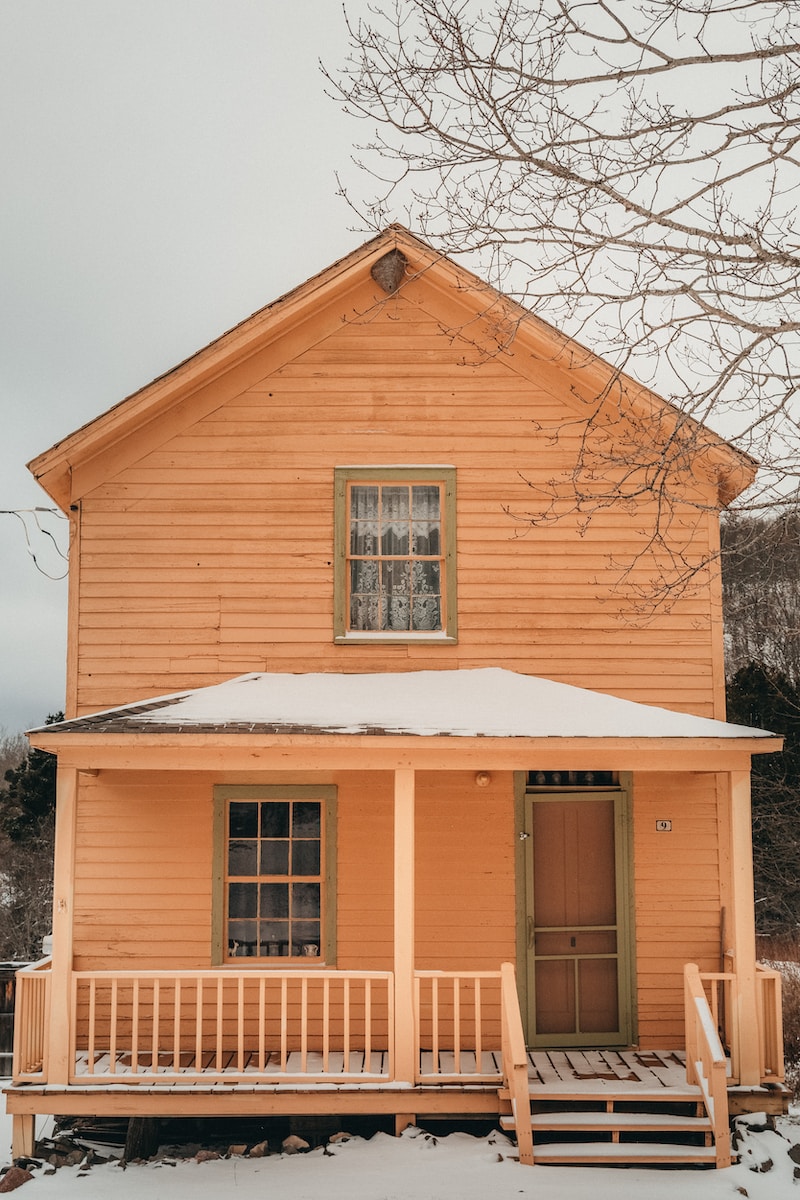

How can I ensure proper drainage around my porch posts to prevent rot?
Proper drainage is essential to prevent moisture buildup around porch posts and to prevent rot. Here are some steps you can take to ensure proper drainage around your porch posts:
Grade the soil: The soil around your porch posts should be graded to slope away from the foundation of your home. This will help direct water away from the porch and prevent pooling around the posts. Aim for a slope of at least 1/4 inch per foot.
Install a French drain: A French drain is a perforated pipe surrounded by gravel that helps to channel water away from the porch. To install a French drain, dig a trench around the porch and slope it away from the foundation of your home. Line the trench with landscape fabric to prevent soil from clogging the pipe, then lay the pipe and cover it with gravel. Backfill the trench with soil and compact it.
Install gutters: Gutters can help to direct water away from the porch and prevent it from pooling around the posts. Make sure the gutters are installed properly and that they are clean and free of debris.
Install a concrete footing: A concrete footing can help to elevate the porch posts above ground level and provide better drainage. To install a concrete footing, dig a hole that is wider than the post and at least 18 inches deep. Fill the hole with concrete and let it cure before setting the post in place.
Use gravel or pavers: If the ground around your porch is prone to moisture buildup, consider using gravel or pavers to create a drainage layer around the posts. This will help to prevent water from seeping into the soil and pooling around the posts.
By taking these steps, you can help ensure proper drainage around your porch posts and prevent rot.
What are some preventative measures I can take to keep porch posts from rotting in the first place?
Preventative measures are important to keep porch posts from rotting in the first place. Here are some steps you can take to prevent porch posts from rotting:
Choose the right material: Choose a material that is naturally resistant to rot, such as cedar or redwood, or use pressure-treated lumber that has been treated with chemicals to resist decay.
Seal the posts: Apply a water-repellent sealant to the porch posts to help prevent moisture from penetrating the wood. Be sure to follow the manufacturer’s instructions for application and reapplication.
Keep the posts dry: Make sure the porch posts are kept dry by ensuring proper drainage around the porch and fixing any leaks or water damage as soon as they are discovered.
Provide adequate ventilation: Make sure there is adequate ventilation around the porch posts to help keep moisture from building up. This may involve installing vents or louvers in enclosed areas or using lattice work around the bottom of the porch.
Trim back vegetation: Vegetation around the porch posts can trap moisture and lead to rot. Keep plants and trees trimmed back from the porch and ensure that they are not touching the posts.
Regularly inspect and maintain the porch posts: Regularly inspect the porch posts for signs of damage or decay and address any issues promptly. This may involve replacing damaged or rotted posts or applying a new coat of sealant to prevent further damage.
By taking these preventative measures, you can help keep porch posts from rotting and extend the life of your porch.
Final thoughts on how to keep porch posts from rotting
We recommend reading the above carefully to know how to keep porch posts from rotting. Porch posts are susceptible to rot due to exposure to moisture and other environmental factors. By taking proactive measures to prevent rot, homeowners can prolong the lifespan of their porch and avoid costly repairs.
Simple steps like those mentioned earlier can go a long way in preventing porch post rot. With proper care and maintenance, homeowners can enjoy their porch for years to come, enhancing the aesthetic appeal and value of their home.
